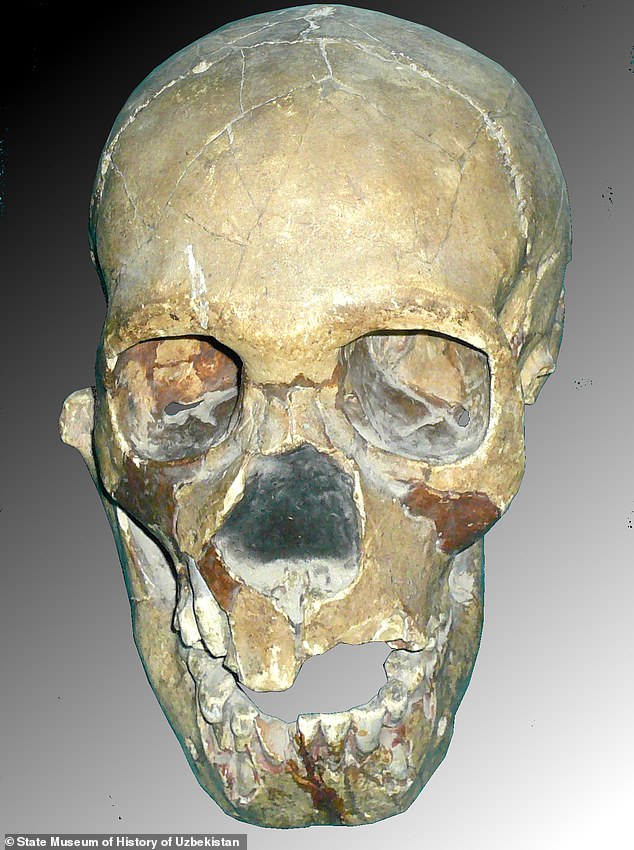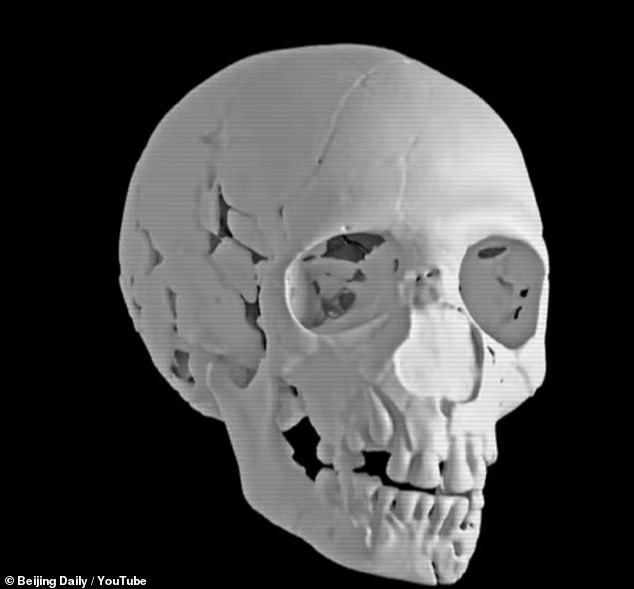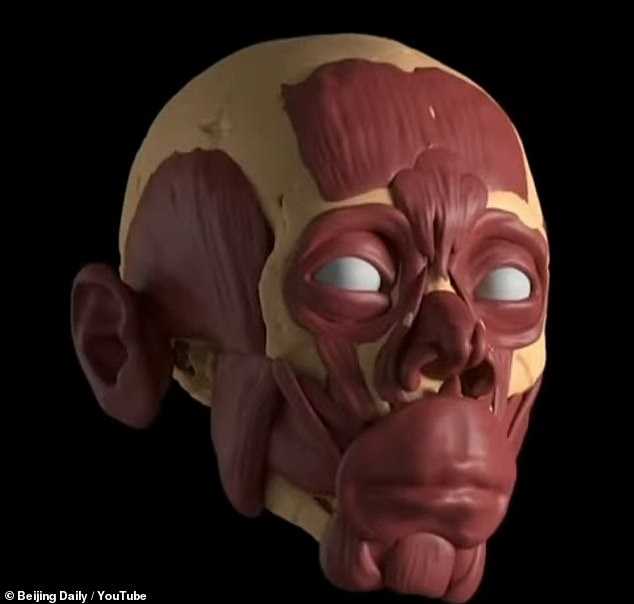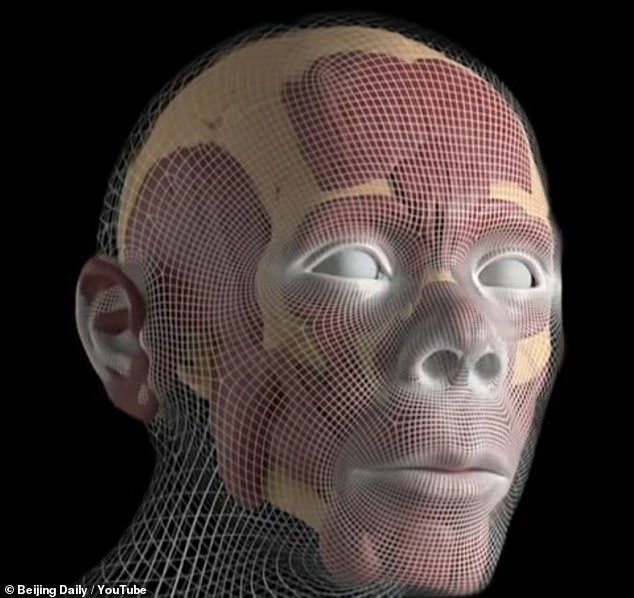Portrait of an 8-year-old Neanderthal boy who lived more than 30,000 years ago is REVEALED
>
The face of an eight-year-old Neanderthal boy who died more than 30,000 years ago has been reconstructed by scientists who used a skull initially found in the Teshik-Tash cave in Uzbekistan in 1938.
The portrait is the first three-dimensional restoration of a Neanderthal skull fossil, which reveals the young boy had a small, turned-up nose that sunk into his face.
The fossil is the first Neanderthal fossil discovered in Asia and the only complete Asian Neanderthal skull fossil preserved so far.
The team, led by China’s Jilin University and Russia’s Moscow State University, believes that the restoration shows the facial shape of prehistoric humans in Eurasia and displays the morphological characteristics of Neanderthals in Central Asia.
The portrait reveals the young boy had a small, turned-up nose that sunk into his face
The skull, dubbed Teshik-Tash 1, was found in a shallow pit inside the cave, along with five pairs of Siberian ibex horn cores and bird skeletons.
And this suggests he was buried ritually.
However, it was not until 2021 was the boy determined to be a Neanderthal by researchers from the Max Planck Institute.
The team analyzed the skull’s frontal bone, noting that the shape matched that of previous Neanderthal skulls.
And a DNA analysis showed that Teshik-Tash 1 carried mtDNA of the Neanderthal type.
At an estimated eight years old, the child had matured enough physically to exhibit distinctive Neanderthal characteristics, such as a large face and nasal area, a long, low cranium, a mandible without a chin, and a maturing brow ridge.
The original skull was reconstructed from approximately 150 fragments.
The team uploaded a scan of the skull and filled in the missing pieces, allowing them to overlay digital muscles, skin and finish with the boy’s facial features.
‘Fossils of Neanderthals, an extinct relative of modern humans, were first discovered in the Neanderthal Valley in Germany and were once widely distributed across Eurasia,’ head of the team at Jilin University Zhang Quanchao told Xinhua.
It was long believed that Neanderthals only roamed the landscapes of Europe during the last ice age, but a study led by the University of Washington in 2015 revealed they might have spread further east and lived alongside modern humans there for longer than was previously thought.
Analysis of the traces of Neanderthal DNA found in the genomes of modern humans has shown that people in East Asia carry between 15 to 30 percent more Neanderthal DNA than Europeans.
Joshua Akey, a geneticist at the University of Washington, and his colleague Benjamin Vernot analyzed distinctive patterns in the DNA of 379 modern Europeans and 286 modern East Asians from China and Japan.

The skull was initially found in the Teshik-Tash cave in Uzbekistan in 1938 and it was not until 2012 was the boy confirmed to be a Neanderthal

The team uploaded a scan of the skull and filled in the missing pieces. The skull was found in pieces, but scientists put it back together
Using computer models, they attempted to simulate how the mixtures of Neanderthal DNA seen in the European and East Asian genomes could have occurred
They concluded that one theory – that modern Europeans interbred more with populations from Africa to water down the Neanderthal DNA they carried – was unlikely.
Instead, they found it was more likely that ancestors of the East Asian populations had bred with Neanderthals more than once.

After piecing the skull together with the technology, the team was able to overlay digital muscles and skin
‘One thing that complicates these analyses is the fact that humans have been constantly migrating throughout their history – this makes it hard to say exactly where interactions with Neanderthals occurred,’ Vernot said.
‘It’s possible, for example, that all of the interbreeding with Neanderthals occurred in the Middle East, before the ancestors of modern non-Africans spread out across Eurasia.
‘In the model from the paper, the ancestors of all non-Africans interbred with Neanderthals, and then split up into multiple groups that would later become Europeans, East Asians.

The skull was also the furthest eastern extent of hominin discoveries outside the Levant. The team believes that the restoration shows the facial shape of prehistoric humans in Eurasia and displays the morphological characteristics of Neanderthals in Central Asia
‘Shortly after they split up, the ancestors of East Asians interbred with Neanderthals just a little bit more.
‘The important thing is that we show that we didn’t just meet Neanderthals once in our history – it looks like we met them multiple times.
‘But as we are able to look at individuals from more and more populations, we’ll hopefully get a better idea of where our ancestors have been, and where they may have interacted with Neanderthals.’
